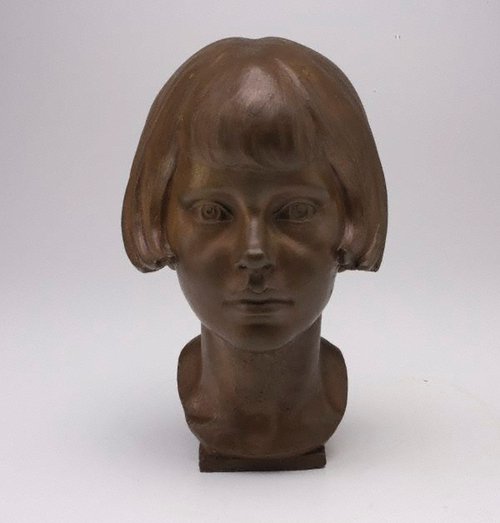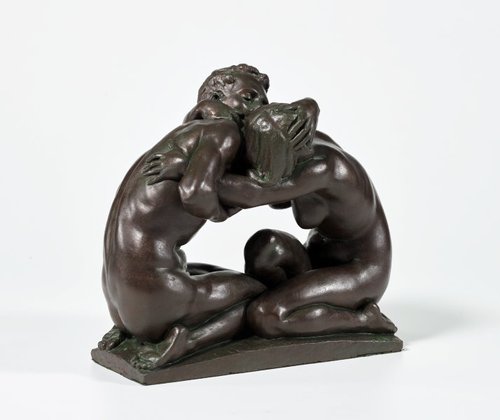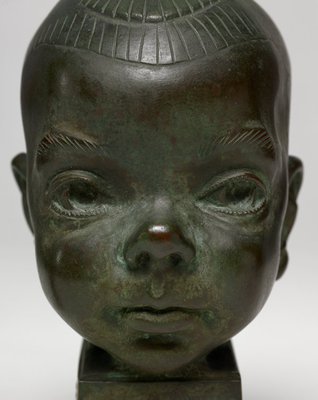
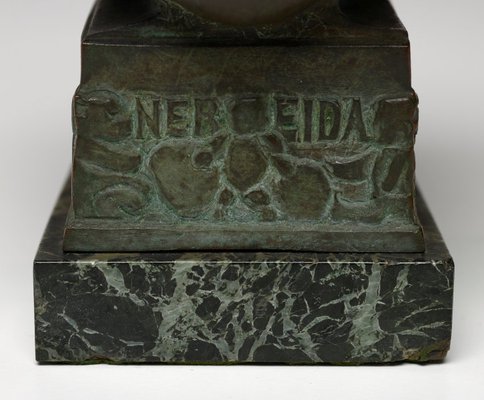
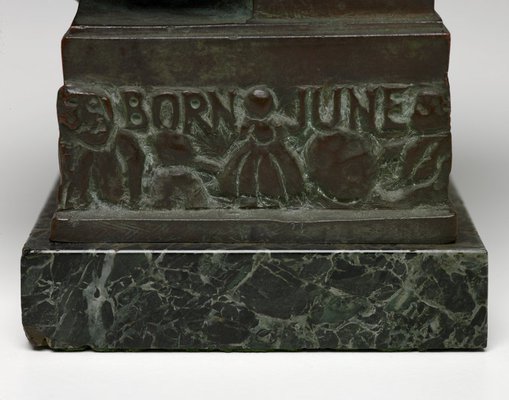
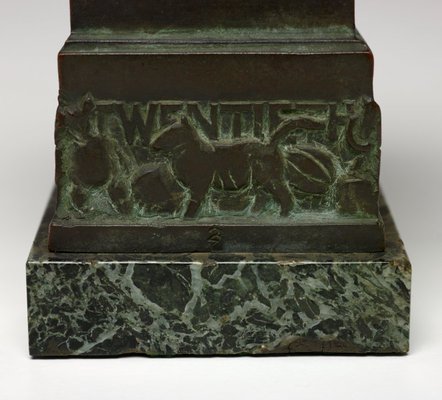
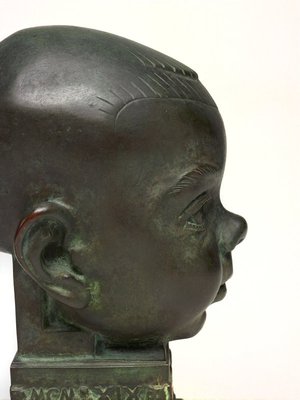
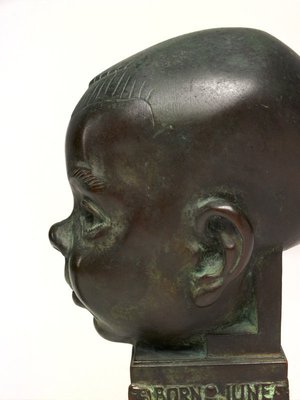
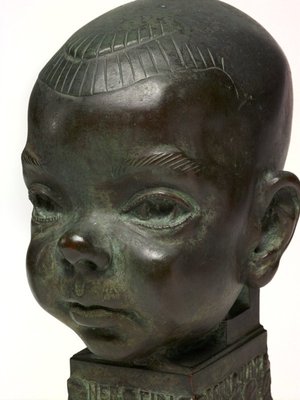
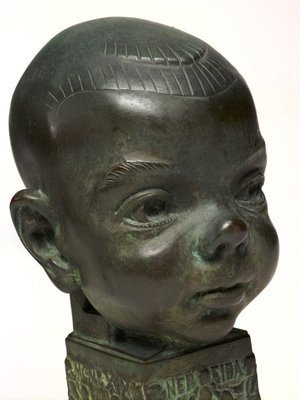
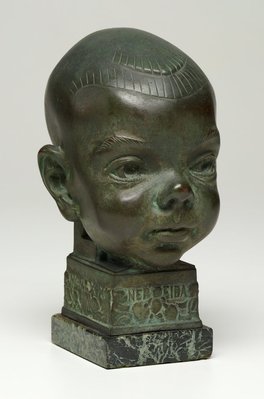
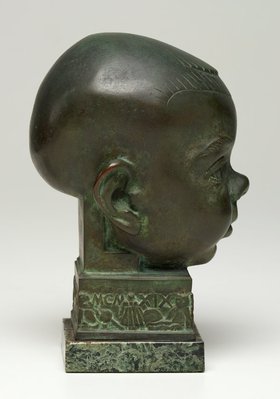
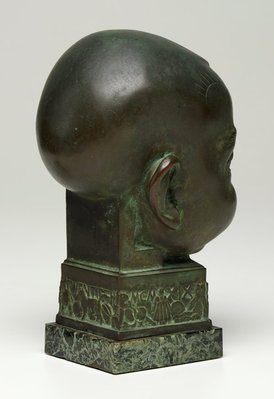
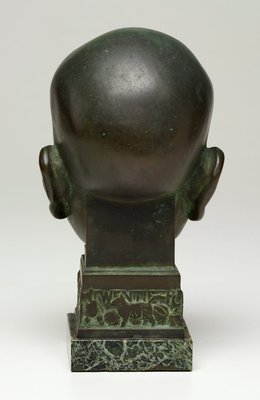
-
Details
- Other Title
- The Starveling
- Date
- 1929-1930
- Media category
- Sculpture
- Materials used
- bronze, marble
- Dimensions
-
19.8 x 11.0 x 13.5 cm
:
a - head, 18 x 11 x 13.5 cm
b - base, 1.8 x 7.3 x 8.5 cm, Marble base and Bronze head are attached, probably by the artist's hand. N.B. "Art in Australia, October1932" published the issue titled 'Rayner Hoff's Sculpture'. Page 17, Plate 4., shows a tall marble base, approximately 8.0 to 10.0 cm in height. No dimensions listed. However, in the book "'Sculpture of Rayner Hoff" published in 1934. Page. 51, b&w illustration shows the marble base significantly cut down in size. Between 1932 and 1934, the marble base was either cut down, or changed over.
- Signature & date
Not signed. Not dated.
- Credit
- Donated through the Australian Governments Cultural Gifts Program by Gift of Stephen Henstock 2019
- Location
- South Building, ground level, 20th-century galleries
- Accession number
- 175.2019.a-b
- Copyright
- Artist information
-
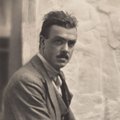 Rayner Hoff
Rayner Hoff
Works in the collection
- Share
-
-
About
Rayner Hoff became the most successful public sculptor of his era, and his work is closely associated with the rapid development of sculpture in Australia in the twentieth century.
Hoff was born in England 1894 and trained under Royal Academy sculptor, Francis Derwent Wood at the Royal College of Art London. In 1922, he was awarded the Prix de Rome travelling scholarship. During his tenure in Naples, studying Renaissance and Greco-Roman art forms he was approached to teach at the East Sydney Technical College in 1923.
In Sydney, Hoff became responsible for establishing the first coherent (European) sculpture school in this country. In his work and teachings, Hoff radically ‘modernised’ the princples of sculptural Antiquity through his commitment to the creed of Vitalism; the belief in an expression of the animated non-rational ‘life energy’ that was understood as residing in the body, and through the use of stylised devices found in Art Deco. Hoff and his students produced figures of muscular and sexual energies that were aligned to the traditions of life modelling, yet stylistically streamlined by the clear-cut, smooth surfaces of Art Deco design. Through such principles Hoff aimed to reconcile the sculpted ideal with the realities of modern life, and adapted these values across the vast scope of his practice, from monumental public commissions to the most intimate of his portrait forms.
Nerieda, was Hoff’s youngest daughter. Born in 1929, she became affectionately known within the family as ‘The Starveling’, due to her bouts of illness and fragile health. Produced at a time when the national birth rate was alarmingly low, the cast of Neredia is touched with new life. Her physical attributes can be understood as a metaphor for her empathetic presence and demonstrate the sculptor’s Vitalist agenda. Here the streamlined emphasis of the features and the repeated linear patterns signal the life-affirming essence of this new entity.
'Nereida' is a familial portrait reflecting the delight the newborn child brought to the Hoff household, with her birth date incised as a decorative adornment circling around the bottom of the bronze work. The strength and symbolism to be found in the essential markings of the eyes, eyelashes and brows, and of the lips and ears conjure character as well as a sense of the affection of the sculptor for his subject.
-
Exhibition history
Shown in 4 exhibitions
Society of Artists Annual exhibition (1930), Education Department Gallery [Loftus Street], Sydney, 05 Sep 1930–02 Oct 1930
Sculpture of Rayner Hoff: Memorial Exhibition, David Jones' Art Gallery, Sydney, Sydney, 19 May 1938–04 Jun 1938
'This vital flesh': the sculpture of Rayner Hoff and his school, Art Gallery of New South Wales, Sydney, 26 Nov 1999–16 Jan 2000
20th-Century galleries, ground level (rehang), Art Gallery of New South Wales, Sydney, 20 Aug 2022–2023
-
Bibliography
Referenced in 8 publications
-
Deborah Beck, Rayner Hoff: the life of a sculptor, 'Chapter 9, On the beach', pg. 84-104, Sydney, 2017, 95.
-
Deborah Beck, Rayner Hoff: the life of a sculptor, 'Chapter 15, Gone too soon', pg. 235-244, Sydney, 2017, 240-242. Chapter 15 references the Rayner Hoff Memorial Exhibition held at David Jones' Galleries in 1938.
-
Norman Carter (Co-ordinator), Sculpture of Rayner Hoff : memorial exhibition held at David Jones' Market St. store, Sydney, May 19- June 4, 1938, 'Catalogue of exhibits', pg.7-8, Sydney, 1938, 7. cat. no 27
-
Deborah Edwards, 'This vital flesh': the sculpture of Rayner Hoff and his school, 'Catalogue of principal works', pg. 100-109, Sydney, 1999, 102.
-
Rayner Hoff, Sculpture of Rayner Hoff / with text by the Rt. Hon. the Earl Beauchamp, Howard Ashton, E.C. Temple Smith and W. Bede Dalley., 'Contents', pg. 114, Sydney, 1934, 51 (b&w illus.), 114.
-
Lionel Linday', Rayner Hoff's Sculpture, 'Rayner Hoff, pg. 8-22, Sydney, Oct 1932, 17 (b&w illus.), 21, 22. plate 4.
-
Society of Artists, Society of Artists Annual Exhibition (1930), 'Catalogue of exhibits', pg. 7-30, Sydney, 1930, 29. cat. no 261; 'Not for sale'
-
Editor Unknown, The Bulletin, 'Sundry Shows - Rayner Hoff.', pg. 34-35, Sydney, 26 May 1938, 35. As a portraitist Hoff excellled ... There is pure genius in the infant head "Nereida".
-


